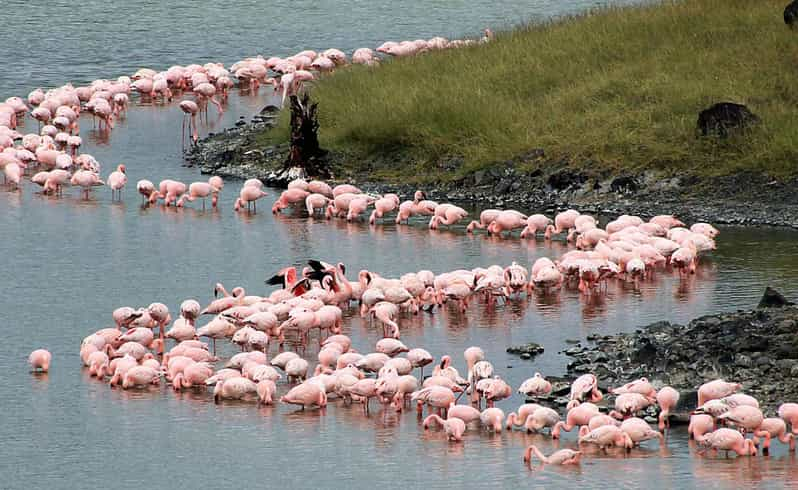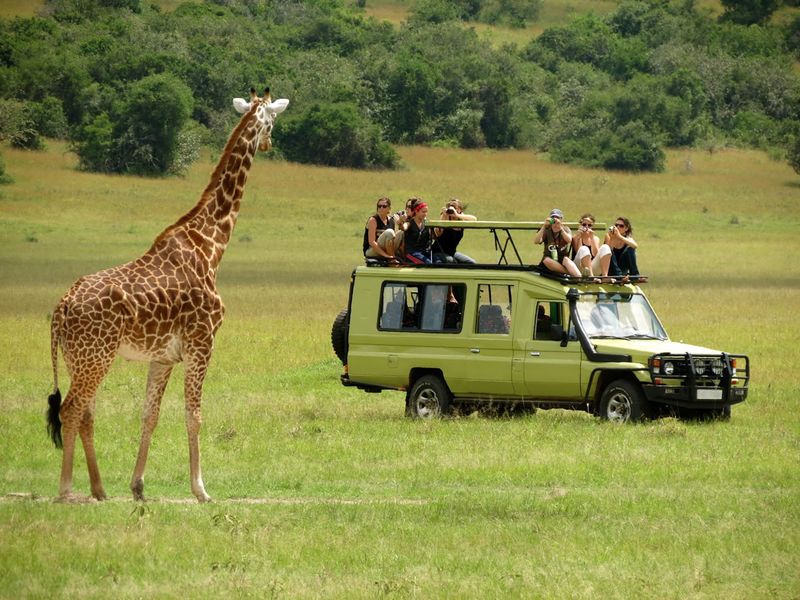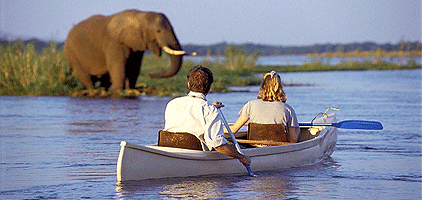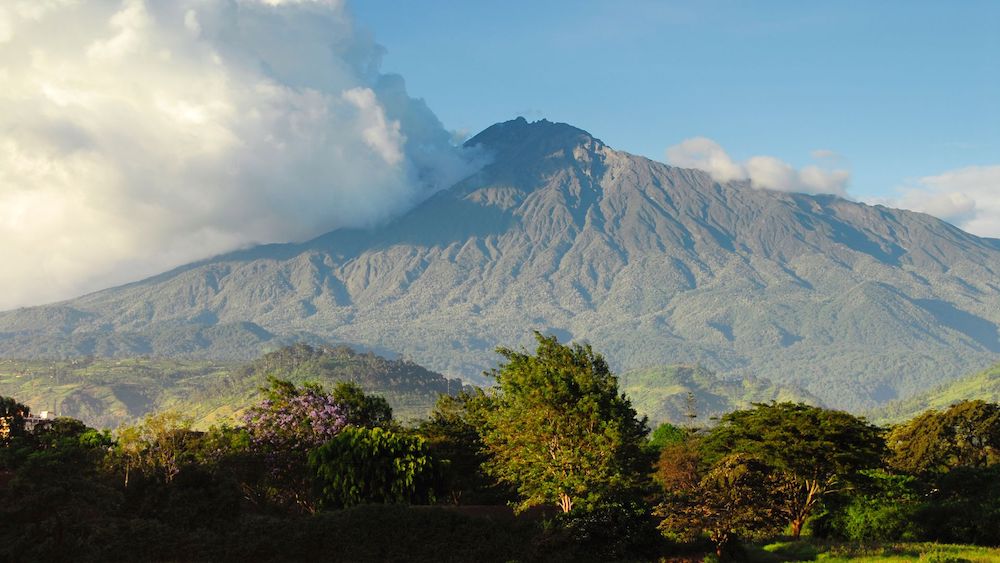Arusha National Park Wildlife Tracking Opportunities




Wildlife Tracking
Arusha National Park offers some of the most unique wildlife tracking experiences in Tanzania, allowing visitors to observe the park’s rich and diverse wildlife up close. Set against the backdrop of Mount Meru, the park is teeming with vibrant ecosystems and an impressive variety of wildlife, from rare primates and large herbivores to elusive predators. Wildlife tracking here offers an immersive experience that blends adventure with a deep appreciation of Tanzania’s natural heritage.
1. Wildlife Tracking Overview
Wildlife tracking in Arusha National Park provides visitors with an opportunity to engage with nature on a personal level. Unlike traditional safari tours, which are usually done from vehicles, tracking involves guided walking experiences, allowing participants to be directly in the animal’s habitat. Experienced park rangers and guides lead these excursions, sharing insights into animal behavior, tracks, and signs while ensuring a safe and educational experience.
2. Key Species to Track
Arusha National Park is home to a wide array of species, making it ideal for wildlife tracking. Notable animals you might encounter or track include:
- Primates: The park is renowned for its population of black-and-white colobus monkeys, known for their striking appearance and tree-dwelling behavior. Visitors may also encounter blue monkeys and the agile Mitis monkeys. Tracking these primates provides insights into their feeding habits, social structures, and unique adaptations.
- Large Mammals: The park hosts over 50 large mammal species, including buffaloes, giraffes, and zebras. These animals can often be tracked by following fresh tracks, observing feeding sites, and listening to the sounds they make as they move through the forest and savannah.
- Predators: Although sightings of predators like leopards, hyenas, and servals are rare, tracking them offers an exhilarating experience. Guides can identify signs of these animals by observing tracks, scat, and even territorial markings on trees.
- Antelope Species: The park has unique antelope species like the Harvey’s red duiker and the suni, which are smaller and more elusive. Tracking these rare animals provides a closer look at the diversity of East African antelope species and their habitats.
- Albino Baboons: Arusha National Park is known for its rare albino baboons. Spotting these unique animals is a rare and special experience for visitors.
3. The Tracking Experience
Tracking wildlife in Arusha National Park is typically done on foot, allowing for a quiet approach and a more intimate connection with the environment. Accompanied by armed park rangers and guides, visitors can explore different habitats within the park, such as montane forests, open grasslands, and riverine areas.
During the tracking experience, guides teach visitors to:
- Identify Tracks and Signs: Learn to recognize footprints, scat, feeding marks, and territorial scratches left by various animals.
- Read Animal Behavior: Guides provide valuable insights into animal behavior, teaching visitors to observe cautiously and understand the social structures of certain species.
- Utilize Tracking Techniques: Guides may use specific calls, gestures, and tracking techniques that help locate animals without disturbing them.
4. Popular Wildlife Tracking Routes
Several areas within Arusha National Park are ideal for wildlife tracking, each offering unique encounters based on its location and ecosystems:
- Ngurdoto Crater: Known as “Little Ngorongoro,” this swampy, forested crater attracts buffaloes, warthogs, baboons, and other wildlife. Guided tracking tours often explore the crater’s perimeter, offering a chance to observe wildlife in a concentrated area.
- Montane Forests of Mount Meru: The dense montane forest on the slopes of Mount Meru provides a habitat for colobus and blue monkeys, as well as various bird species. Tracking in this area lets visitors experience the diverse forest ecosystem while seeking out these primates.
- Ujambo Wa Mbogo: This large natural glade is popular for spotting buffaloes, giraffes, warthogs, and other herbivores that graze in the open space. Tracking here provides a broader view of large animals and offers excellent photography opportunities.
- Momella Lakes: The lakes attract a variety of bird species, as well as larger animals like giraffes and buffaloes that come to drink. Tracking along the shores of these lakes allows visitors to observe the interactions between birds and other animals in the habitat.
5. The Role of Local Guides and Rangers
Local guides and park rangers play a crucial role in the tracking experience. With their expertise in animal behavior and ecosystem knowledge, they ensure visitor safety while maximizing wildlife viewing opportunities. They also educate guests on ethical tracking practices, respecting animal habitats, and understanding the importance of conservation efforts.
6. Conservation and Sustainable Tourism
Arusha National Park emphasizes eco-tourism and sustainable wildlife tracking practices. By engaging in these guided tracking experiences, visitors support conservation efforts and sustainable tourism in the region. Tracking is designed to have minimal impact on wildlife habitats, with strict guidelines in place to ensure animals are not disturbed.
7. Tips for Wildlife Tracking in Arusha National Park
- Wear appropriate clothing: Earth-toned, lightweight, and breathable clothing is ideal for blending in with the environment and staying comfortable.
- Stay quiet and alert: Wildlife tracking requires a keen sense of observation and silence to avoid disturbing animals.
- Bring essentials: Binoculars, cameras, sunscreen, and water are essential for a comfortable and successful tracking experience.
- Respect safety guidelines: Follow your guide’s instructions at all times, as they know the park’s terrain and animal behavior best.
Arusha National Park’s wildlife tracking opportunities offer a profound experience of Tanzania’s natural beauty, fostering a connection with the landscape and wildlife that traditional safaris may not provide. Through guided tracking adventures, visitors witness the park’s biodiversity up close, gaining unforgettable insights into animal behavior, ecology, and conservation efforts.

One Comment